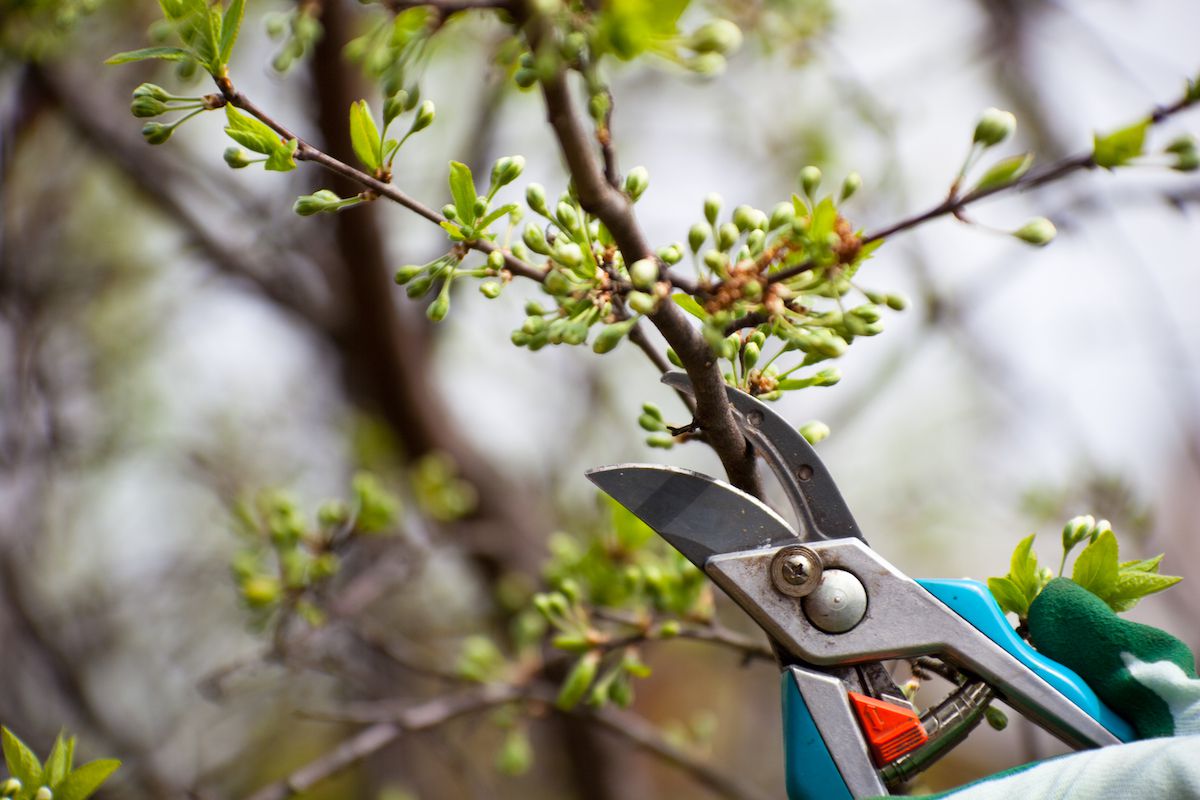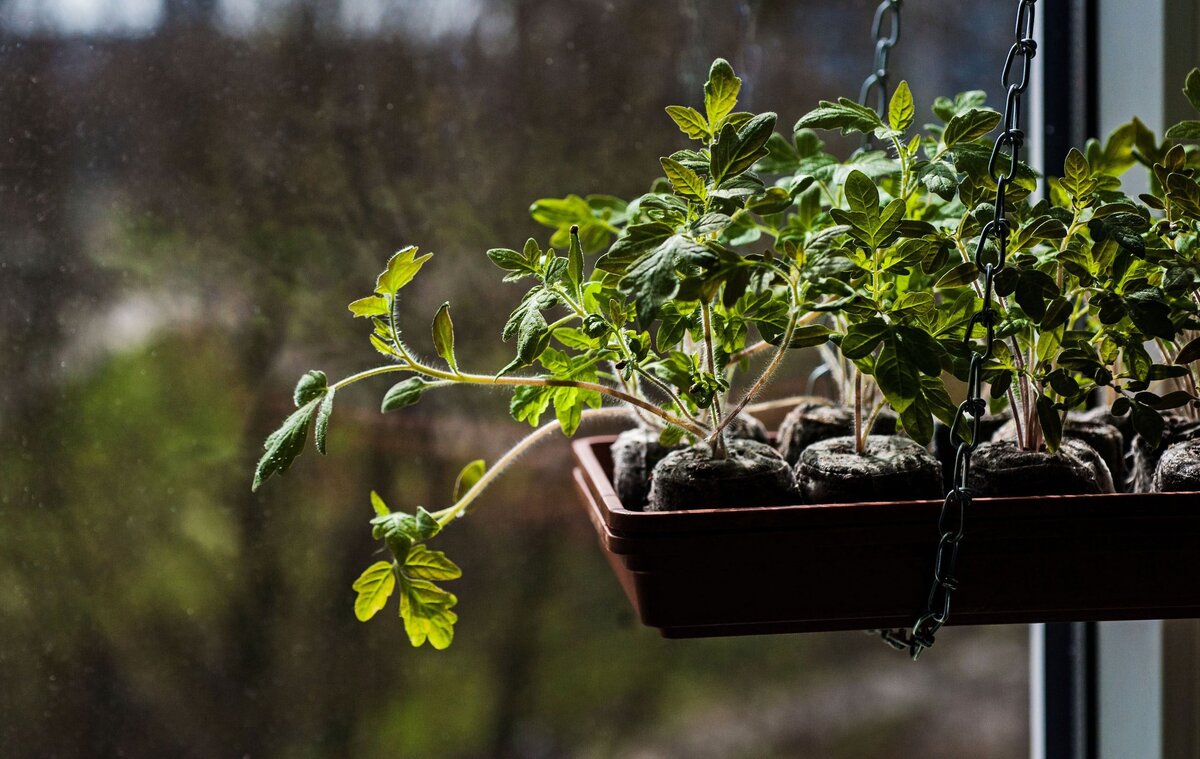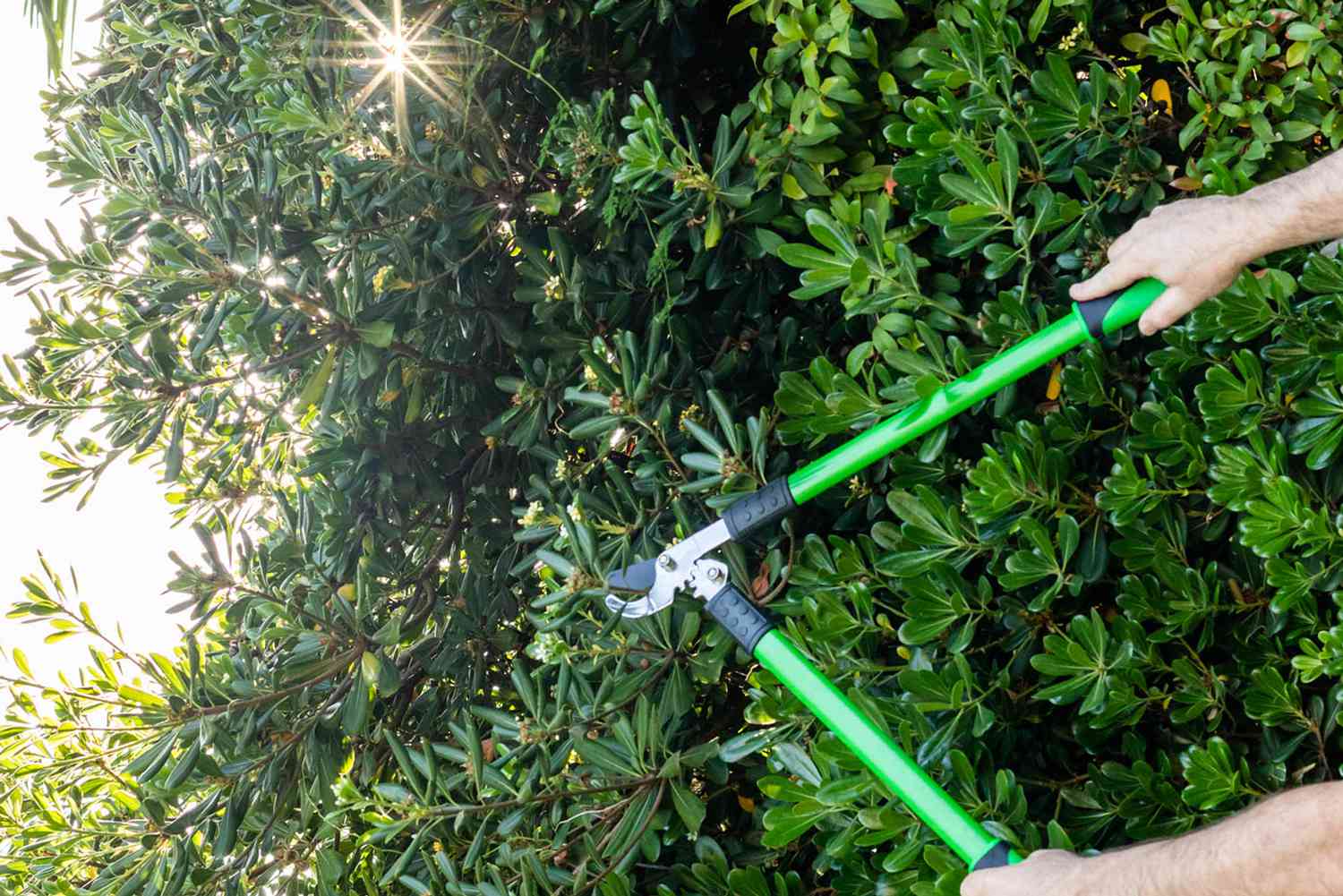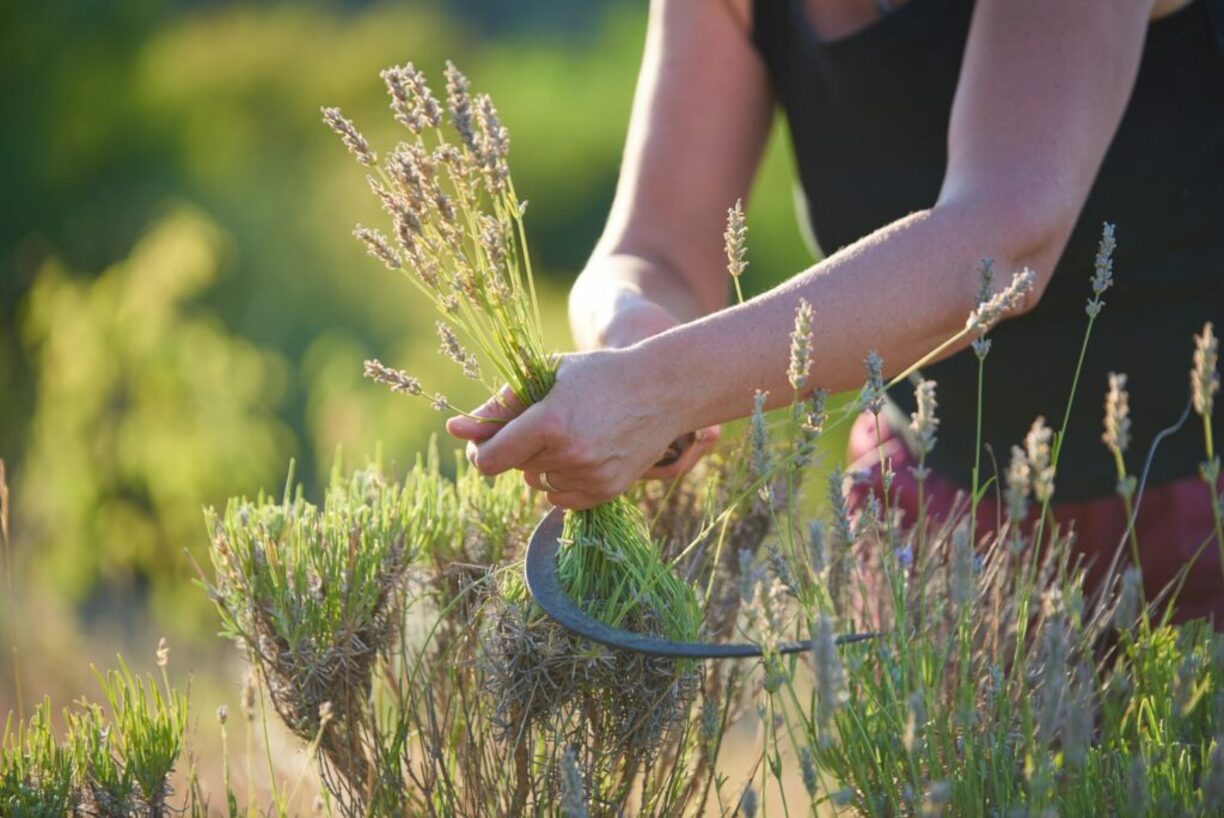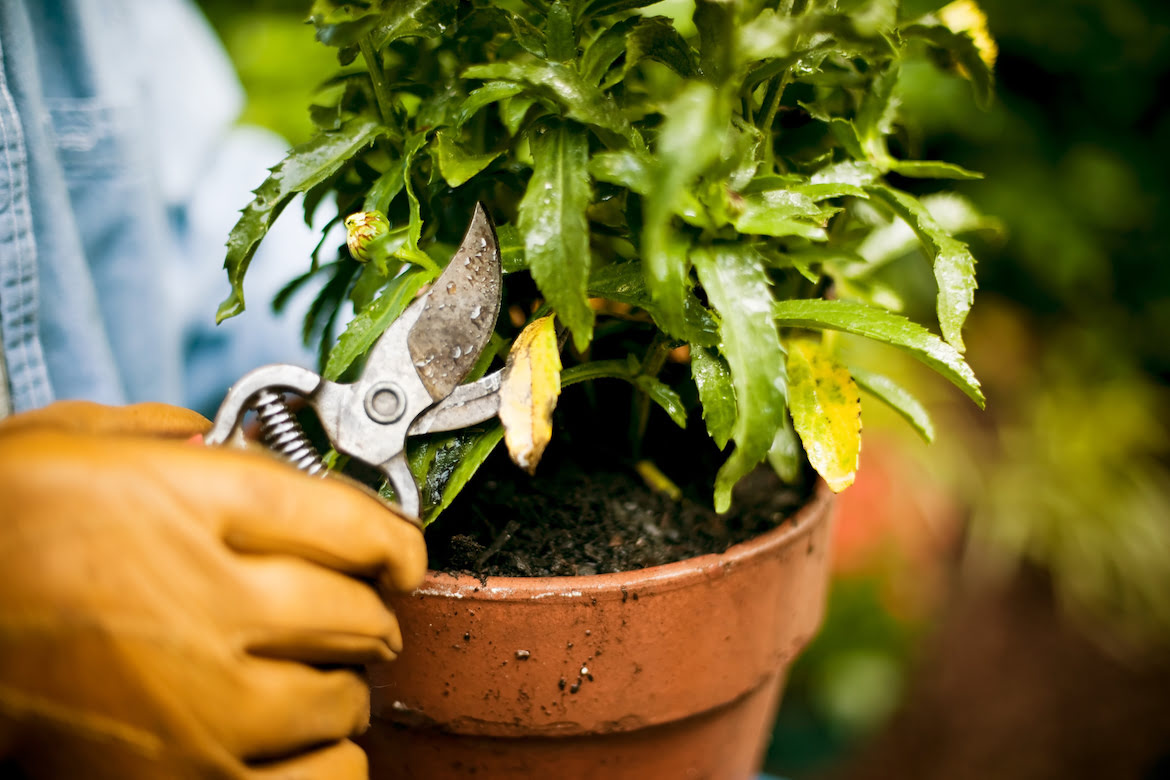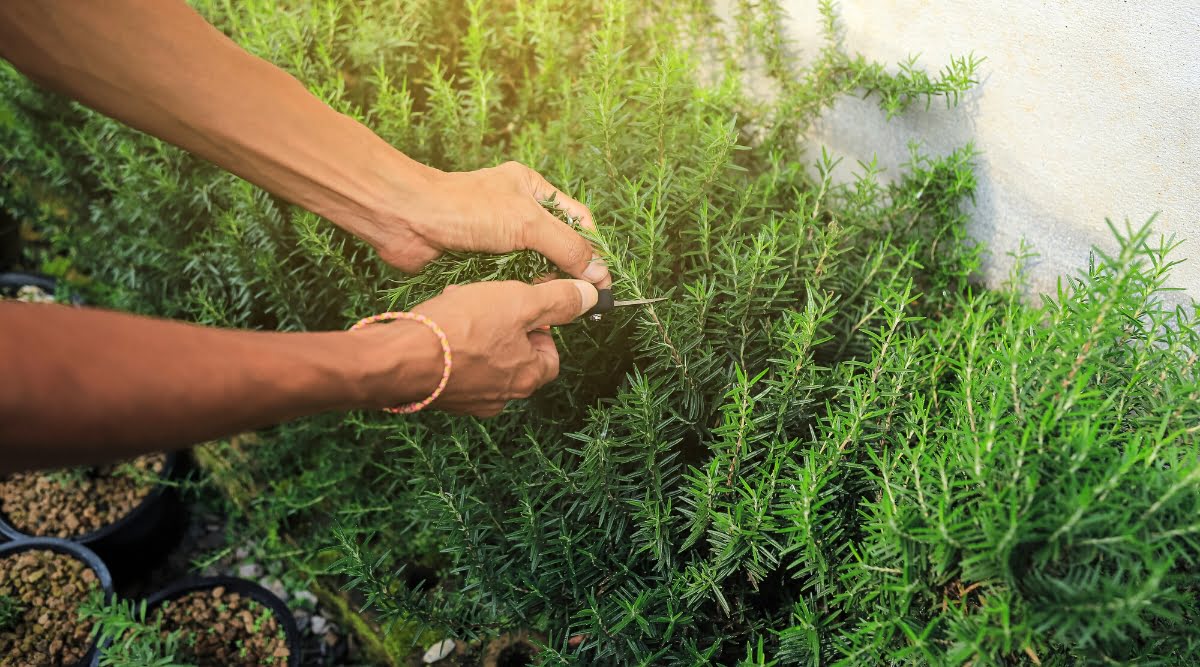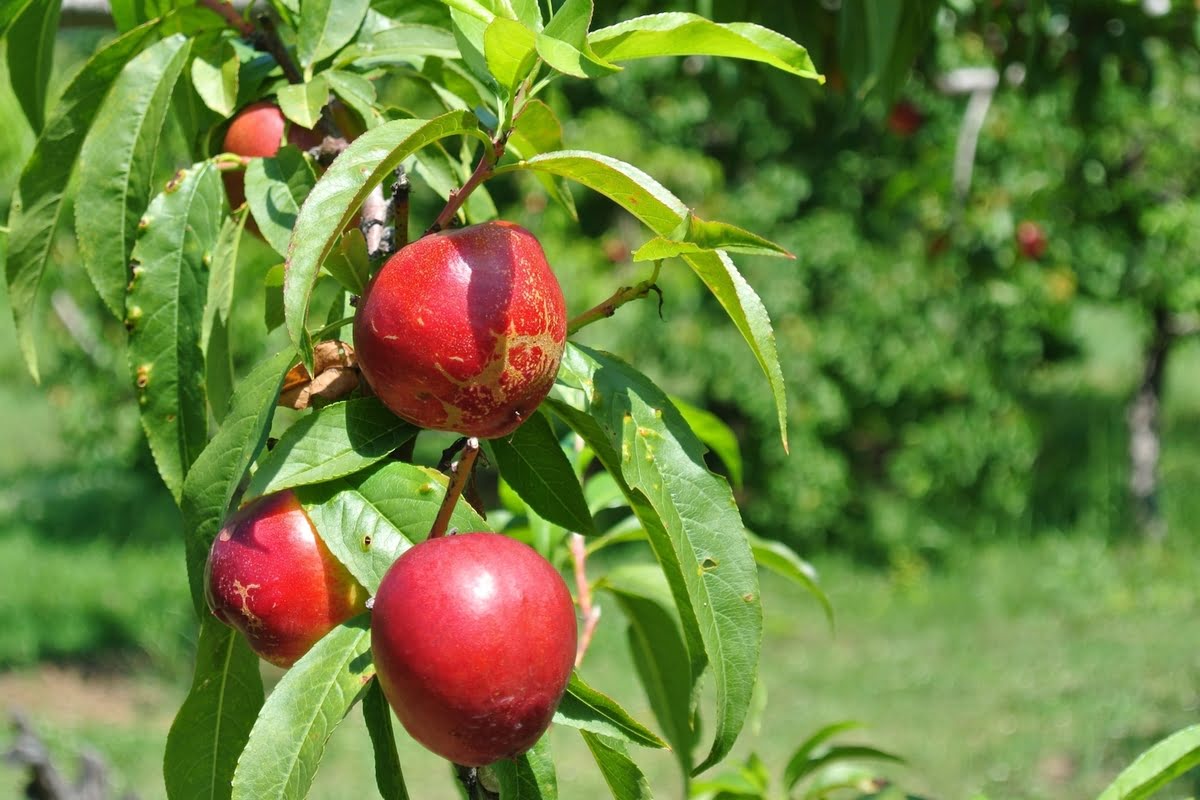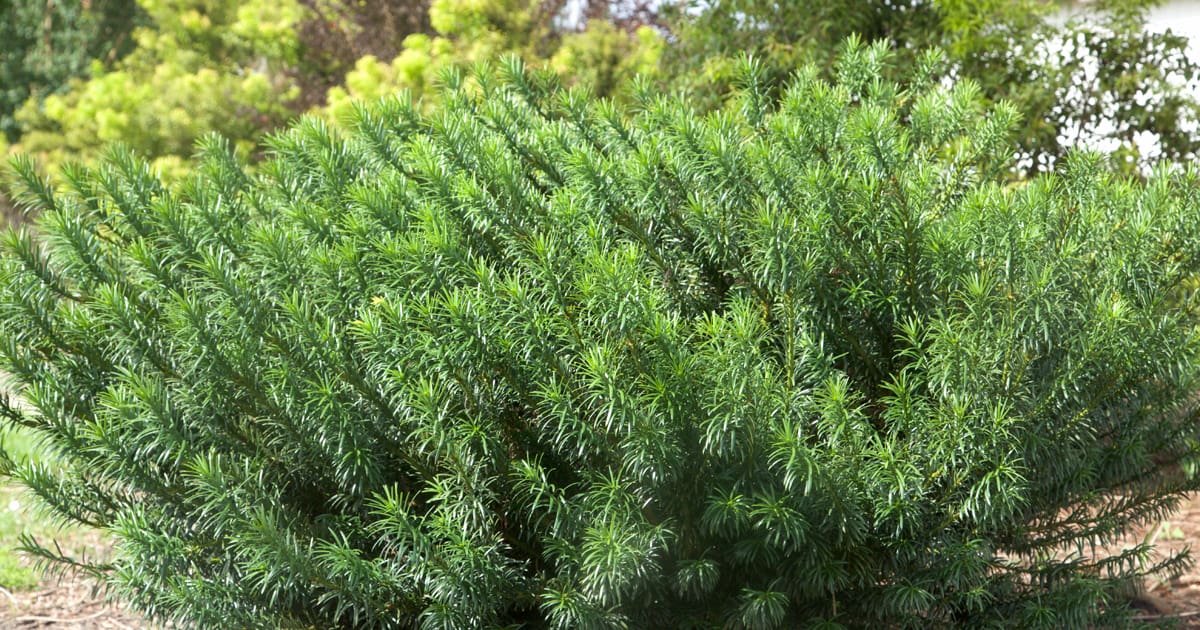Home>Gardening Techniques>Plant Care>What Is Cane Pruning
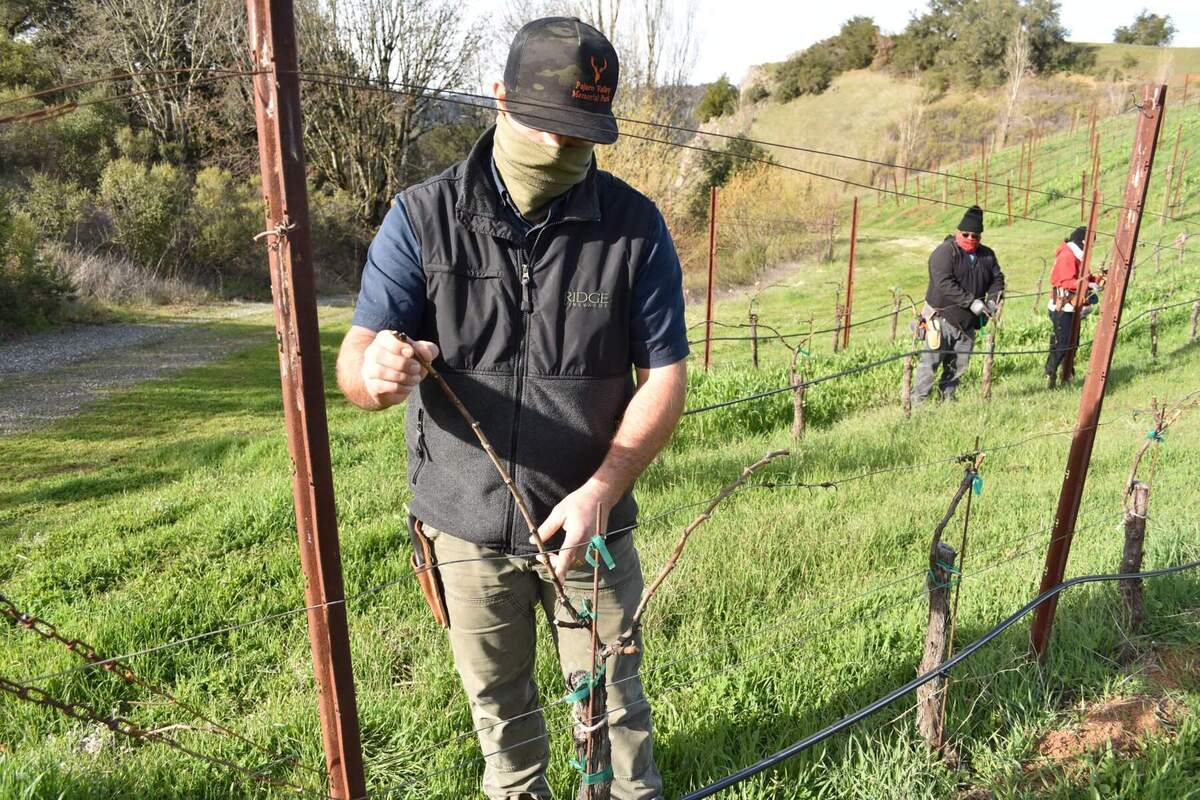

Plant Care
What Is Cane Pruning
Modified: January 22, 2024
Learn more about cane pruning and its importance in plant care. Discover the benefits and techniques involved in this essential aspect of maintaining healthy plants.
(Many of the links in this article redirect to a specific reviewed product. Your purchase of these products through affiliate links helps to generate commission for Chicagolandgardening.com, at no extra cost. Learn more)
Table of Contents
Introduction
Welcome to the world of plant care! If you’re a proud plant parent or simply have a green thumb, you’re probably always seeking ways to ensure the health and vitality of your beloved plants. One essential aspect of plant care is pruning, which involves the intentional removal of certain parts of a plant to promote growth, control size, and enhance its overall appearance. Cane pruning is a specific pruning technique used mainly for vineyard management, but it can also be applied to certain types of plants and shrubs in residential and commercial settings.
Cane pruning is a pruning method that focuses on the removal of old, unproductive canes and encourages the growth of new, vigorous canes. By selectively pruning the canes, you can stimulate the plant’s energy towards producing quality fruit, flowers, or foliage. This technique has been widely used in viticulture, especially for grapevines, where it plays a crucial role in optimizing grape production and maintaining vine health.
But cane pruning isn’t limited to vineyards. Many fruit trees, such as raspberries, blackberries, and certain varieties of roses, can benefit from this pruning technique. It helps these plants develop stronger branches, produce larger fruits, and improve overall plant structure. Understanding the benefits, techniques, and considerations of cane pruning will empower you to confidently apply this method to enhance the growth and longevity of your plants.
In the following sections, we will delve deeper into the art of cane pruning, exploring the various techniques and methods involved. We will also discuss when to use cane pruning and the key factors to consider for successful pruning. By the end of this article, you will have a solid foundation in cane pruning and be well-equipped to tackle this essential aspect of plant care.
Definition of Cane Pruning
Cane pruning is a specific method of pruning that involves the selective removal of old, unproductive canes and encourages the growth of new, healthy canes. It is commonly used in vineyard management to optimize grape production and maintain vine health. However, the concept of cane pruning can also be applied to certain types of fruit trees and shrubs.
When it comes to grapevines, cane pruning is an essential technique for managing vine growth and ensuring high-quality fruit production. Grapevines are typically trained along trellises or support structures, and each year, new shoots emerge from the buds on the canes. These shoots develop into fruitful canes for the following year. Cane pruning involves selecting and retaining a limited number of these fruitful canes while removing others to promote optimal growth.
The process of cane pruning usually takes place during the dormant season, which is typically in late winter or early spring. It is important to correctly identify the canes to remove and those to retain. The canes to be removed are usually older, unproductive ones that have already borne fruit. By removing these canes, you allow the plant to direct its energy towards developing strong, productive canes for the upcoming growing season.
In terms of fruit trees and shrubs, cane pruning can also be beneficial for certain varieties. Raspberry and blackberry bushes, for example, are commonly cane pruned to manage their growth and encourage the production of larger, more flavorful fruits. Similarly, certain varieties of roses can benefit from cane pruning to improve flowering and maintain a healthy plant structure.
Cane pruning differs from other pruning techniques, such as spur pruning or tip pruning, as it focuses on the selective removal of entire canes rather than shorter segments. It is a technique that requires careful observation and consideration of each plant’s specific needs. By practicing cane pruning, you can help ensure the long-term health and productivity of your plants while maintaining their aesthetic appeal.
Benefits of Cane Pruning
Cane pruning offers several benefits for both vineyard management and the overall growth and development of certain fruit trees and shrubs. Understanding these benefits can help you make informed decisions about incorporating cane pruning into your plant care routine.
1. Increased fruit production: One of the primary advantages of cane pruning is its ability to promote increased fruit production. By selectively removing unproductive canes and focusing the plant’s energy on developing new, fruitful canes, you can maximize the yield of high-quality fruits. This is particularly crucial in vineyards, where the quality and quantity of grapes significantly impact the end product.
2. Improved fruit quality: Cane pruning plays a vital role in improving the quality of the fruits produced. By removing older canes that have already borne fruit, you allow the plant to channel its resources into developing healthier, more vibrant canes. These new canes have better access to sunlight, nutrients, and water, resulting in improved fruit size, flavor, and color.
3. Enhanced disease prevention: Regular cane pruning helps maintain the overall health and vitality of the plant. By removing old canes, you eliminate potential hiding spots for pests and reduce the risk of disease. Increased airflow and sunlight penetration through proper pruning techniques also contribute to disease prevention, as it creates an unfavorable environment for pathogens to thrive.
4. Plant structure and aesthetics: Cane pruning can help shape and maintain the desired structure of your plants, resulting in an aesthetically pleasing appearance. Pruning removes excessive growth, allowing the plant to develop balanced branches and canopy. This not only enhances the overall visual appeal but also improves air circulation and light penetration, which are essential for healthy plant growth.
5. Long-term plant health: By practicing regular cane pruning, you can ensure the long-term health and longevity of your plants. Removing old and unproductive canes reduces the risk of disease spread and allows the plant to focus its energy on developing new, healthy canes. This promotes overall plant vigor, increasing its resilience to environmental stressors and promoting better growth and productivity over time.
6. Ease of maintenance: Cane pruning, when done correctly, can simplify the overall maintenance of your plants. By removing old canes and managing growth, you can prevent overcrowding and tangled branches, making it easier to access the plant for further pruning, harvesting, and general care.
These benefits highlight the importance of cane pruning in plant care and emphasize its role in maximizing fruit production, improving fruit quality, and promoting the long-term health and vitality of your plants. By incorporating cane pruning into your gardening routine, you can unleash the full potential of your plants and enjoy a bountiful harvest year after year.
Techniques and Methods of Cane Pruning
Cane pruning involves a combination of techniques and methods that vary depending on the plant species and desired outcomes. Here, we discuss some common techniques and considerations for successful cane pruning.
1. Selecting the canes: The first step in cane pruning is identifying the canes to retain and those to remove. In general, you want to keep healthy, productive canes that are well-positioned and have good bud development. Remove old, unproductive canes that have already borne fruit. It is crucial to select canes that are free from disease or damage, as they will serve as the foundation for new growth and future fruit production.
2. Pruning time: The timing of cane pruning is critical and varies depending on the plant species. Dormant pruning, conducted during the late winter or early spring when the plant is in its dormant stage, is usually recommended. This ensures that the plant has enough time to recover from the pruning process and promotes healthy new growth.
3. Pruning equipment: Use clean, sharp pruning shears or loppers to make clean cuts and minimize damage to the plant. Disinfect your pruning tools between plants to avoid disease transmission. Make cuts at a slight angle, just above a bud or lateral branch, to encourage proper healing and prevent water accumulation on the cut surface.
4. Training and trellising: In vineyards, cane pruning is often done in conjunction with training the vines along a trellis system. Ensure that the canes are properly secured to the trellis wires to support the weight of the new growth. This helps maintain the plant’s structure and facilitates optimal sun exposure and airflow, leading to better fruit development.
5. Renewal pruning: Over time, certain plant species may develop weak or overcrowded canes. Renewal pruning involves removing a portion of older, unproductive canes at the base to stimulate the growth of new canes. This technique helps rejuvenate the plant and maintain a healthy balance of young and old canes.
6. Maintenance pruning: Regular maintenance pruning is essential to remove any dead, damaged, or diseased canes throughout the growing season. This helps prevent the spread of diseases and promotes the overall health and vitality of the plants.
7. Individual plant considerations: It is important to understand the specific needs of the plant species you are pruning. Some plants may require more extensive cane pruning, while others may benefit from lighter pruning. Take into account the growth habit, flowering and fruiting patterns, and any unique characteristics of the plant to tailor the pruning technique accordingly.
Remember to always consult plant-specific resources or seek advice from experienced gardeners or horticulturists to ensure you follow the appropriate techniques and methods for cane pruning in your specific plant species. By employing the proper techniques and methods, you can effectively harness the benefits of cane pruning and foster healthy growth and abundant fruit production.
When to Use Cane Pruning
Cane pruning is a pruning technique that can be applied to various plant species, but it is especially beneficial for grapevines and certain fruit trees and shrubs. Understanding when to use cane pruning is crucial for maximizing its effectiveness and promoting healthy plant growth and development.
1. Grapevines: Cane pruning is an integral part of vineyard management and is primarily used for grapevines. It is typically done during the dormant season, which is usually in late winter or early spring. This timing allows the plants to recover and encourages new growth in preparation for the upcoming growing season. Cane pruning is essential for optimizing grape production, maintaining vine health, and ensuring high-quality fruit.
2. Fruit trees: Certain fruit trees, such as raspberries and blackberries, can benefit from cane pruning as well. These plants typically produce long, flexible canes that bear fruit. Cane pruning helps manage the plant’s growth by removing old, unproductive canes and promoting the development of new, healthy canes. It is best to cane prune fruit trees during the dormant season to minimize stress on the plant and encourage robust growth and fruit production.
3. Roses: Some varieties of roses, specifically climbing roses and certain hybrid teas, can also benefit from cane pruning. By selectively removing old and weak canes, you encourage the growth of new, vigorous canes that will produce more vibrant blooms. Cane pruning for roses is often done in early spring before new growth appears.
4. Other shrubs: While cane pruning is most commonly associated with grapevines and certain fruit trees, it can also be used for other shrubs, such as certain types of hydrangeas. Pruning these shrubs during the dormant season helps maintain a tidy appearance, promotes healthy growth, and encourages abundant flowering.
It’s important to note that not all plants require cane pruning. Some species may benefit from alternative pruning techniques or may not require pruning at all. Before implementing cane pruning, make sure to research the specific needs and requirements of your plant species. Understand their growth habits, flowering and fruiting patterns, and any unique considerations to determine if cane pruning is appropriate.
Additionally, environmental factors and regional climate play a role in determining the timing for cane pruning. It’s important to consider your specific location and local climate when deciding when to implement cane pruning. Consulting local gardening resources or seeking advice from experienced gardeners or horticulturists can provide valuable insights tailored to your region.
Incorporating cane pruning at the appropriate time for your specific plant species ensures that you harness its full potential and promote healthy growth, robust fruit production, and beautiful blooms. Understanding when to use cane pruning is key to maintaining the overall health and vitality of your plants and maximizing their aesthetic and productive potential.
Considerations for Successful Cane Pruning
While cane pruning offers numerous benefits for plant growth and development, it is important to consider several factors to ensure successful pruning. Taking these considerations into account will help you achieve optimal results and maintain the overall health and vitality of your plants.
1. Plant health: Before engaging in cane pruning, assess the health of your plants. Pruning unhealthy plants can stress them further and may hinder their recovery. It is best to address any underlying health issues, such as diseases or pests, before proceeding with pruning to ensure the plant can fully benefit from the process.
2. Timing: The timing of cane pruning is crucial for the success of the process. Different plant species have specific pruning requirements, so it’s essential to research and understand the appropriate timing for your specific plants. Pruning during the dormant season is typically recommended, as it minimizes stress on the plant and encourages healthy regrowth.
3. Weather conditions: Consider the weather conditions when planning your cane pruning. Extreme temperatures or unfavorable weather conditions, such as heavy rain or frost, can impact the plant’s ability to heal and recover from pruning wounds. It’s best to avoid pruning during extreme weather events to minimize the risk of damage and encourage successful plant regeneration.
4. Pruning technique: Understanding the correct pruning technique for each plant species is essential. Improper pruning methods can lead to damage or disease transmission. Research and educate yourself on the specific pruning techniques recommended for your plants. Utilize proper tools and make clean, angled cuts to promote healing and prevent water accumulation on the pruning wounds.
5. Selective pruning: Cane pruning involves selectively removing specific canes for the desired outcome. When choosing canes to retain or remove, consider factors such as cane age, size, location, and overall plant structure. Aim for a balanced distribution of canes and avoid removing too many canes at once, as this can cause stress and affect the plant’s ability to produce fruits or flowers in the following season.
6. Regular maintenance: Cane pruning is most effective when performed as part of regular plant maintenance. Consistent pruning throughout the plant’s life helps maintain its health and appearance. Regularly inspect your plants for dead, diseased, or damaged canes, and remove them promptly. This proactive approach helps prevent the spread of diseases, improves air circulation, and promotes overall plant resilience.
7. Learn from experience: Becoming proficient in cane pruning takes time and practice. Every plant is unique, and what works well for one may not work for another. Observe and learn from your pruning experiences, noting the plant’s response and adjusting your pruning techniques accordingly. As you gain experience, you will develop a better understanding of your plants’ specific needs and be able to tailor your pruning approach for optimal results.
By considering these factors and adopting a mindful and informed approach to cane pruning, you can effectively promote healthy plant growth, encourage bountiful blooms or fruitful harvests, and maintain the overall vigor and vitality of your plants.
Common Mistakes to Avoid in Cane Pruning
While cane pruning can be a beneficial technique for plant care, it is important to avoid common mistakes that can hinder the success of the pruning process. By being aware of these mistakes and taking proactive measures, you can ensure that your plants thrive and reach their full potential.
1. Incorrect pruning timing: Pruning at the wrong time can have negative consequences on the plant’s health. Pruning too early or too late in the season can disrupt the plant’s growth cycle and result in reduced fruit production or weakened plant structure. Research and understand the specific timing requirements for your plants to ensure successful cane pruning.
2. Excessive pruning: Removing too many canes or pruning excessively can stress the plant and impede its ability to produce fruits or flowers. It is important to strike a balance between removing old, unproductive canes and preserving enough healthy canes for growth and development. Over-pruning can also lead to an imbalance in the plant’s structure and negatively impact its overall appearance.
3. Pruning wounds left open: After pruning, it is crucial to ensure that all pruning wounds are properly sealed. Leaving open wounds exposes the plant to potential infections and diseases. Apply a protective sealant or pruning paint to the larger cuts to promote healing and prevent pathogens from entering the plant.
4. Neglecting pruning tool maintenance: Using dull or contaminated pruning tools can cause damage to the plant and facilitate the spread of diseases. Maintain your pruning tools by regularly sharpening the blades and disinfecting them between cuts or when moving from one plant to another. This practice helps prevent the transmission of pathogens and ensures clean, precise cuts.
5. Lack of plant-specific knowledge: Each plant species has different pruning requirements and characteristics. It is essential to research and understand the specific needs of your plants before pruning. Some plants may require more intricate pruning techniques, while others may benefit from lighter pruning. Knowledge of each plant’s growth habits, flowering patterns, and fruiting cycles will guide you in making informed pruning decisions.
6. Removing all new growth: While it may be tempting to remove all new growth during cane pruning, it is important to exercise restraint. New canes often contain the buds that will develop into fruitful canes for the next season. Removing all new growth can hinder the plant’s ability to produce fruits or flowers and negatively impact its overall health.
7. Ignoring plant health issues: Pruning unhealthy plants without addressing underlying health issues can potentially exacerbate the problem. Before pruning, ensure that your plants are free of diseases, pests, or other health concerns. Address any plant health issues first to ensure successful pruning and allow the plant to recover effectively.
By avoiding these common mistakes, you can enhance the effectiveness of your cane pruning efforts and promote the health and vitality of your plants. Take the time to educate yourself, observe your plants’ responses, and approach pruning with care and precision.
Conclusion
Cane pruning is a valuable technique that can greatly enhance the growth, productivity, and overall health of various plants. Whether it’s grapevines in vineyards, fruit trees in orchards, or certain shrubs in gardens, cane pruning offers numerous benefits for plant care. By selectively removing old, unproductive canes and promoting the growth of new, healthy canes, you can maximize fruit production, improve fruit quality, and maintain a desired plant structure.
When practicing cane pruning, it is important to consider several key factors. These include understanding the specific pruning needs of your plants, using the correct pruning techniques and timing, and carefully selecting the canes to remove or retain. Avoiding common mistakes, such as excessive pruning or neglecting proper tool maintenance, further ensures successful outcomes.
By implementing cane pruning as part of your plant care routine, you can foster healthy growth, enhance the aesthetic appeal of your plants, and enjoy abundant blooms or bountiful harvests. Regularly pruning and maintaining your plants will promote their long-term health and vitality, helping them withstand environmental stressors and thrive for years to come.
Remember, each plant is unique, and understanding its specific needs and characteristics is paramount. As you continue on your journey as a plant caretaker, further your knowledge through research, observation, and experimentation. With time and experience, you will develop a deeper understanding of your plants’ responses to cane pruning and be able to fine-tune your techniques accordingly.
So, embrace the art of cane pruning and explore its potential to transform your plants. Enjoy the rewarding journey of nurturing your green companions, witnessing their growth, and reaping the rewards of a well-pruned, thriving garden.
